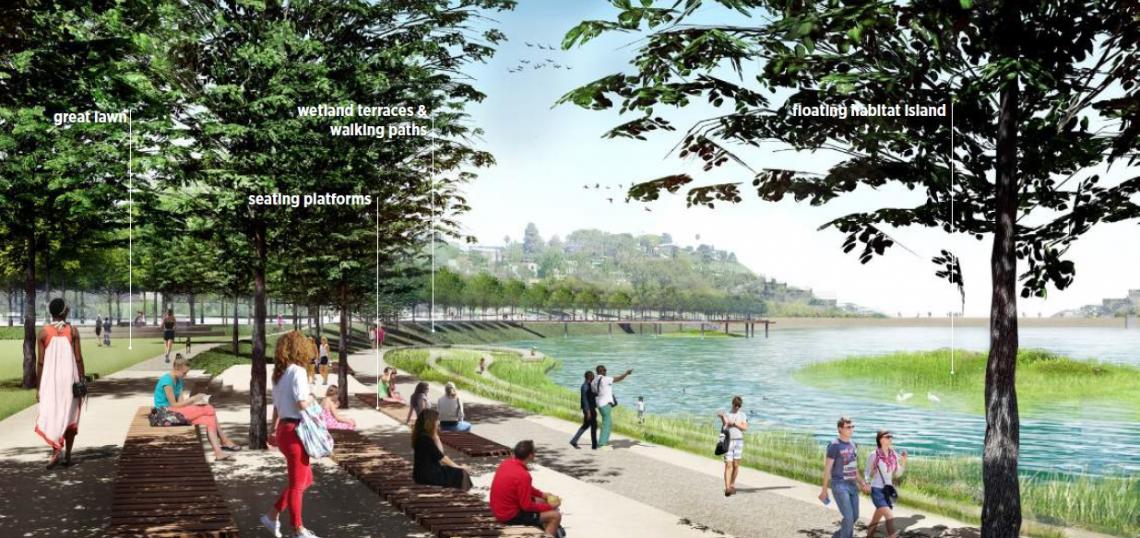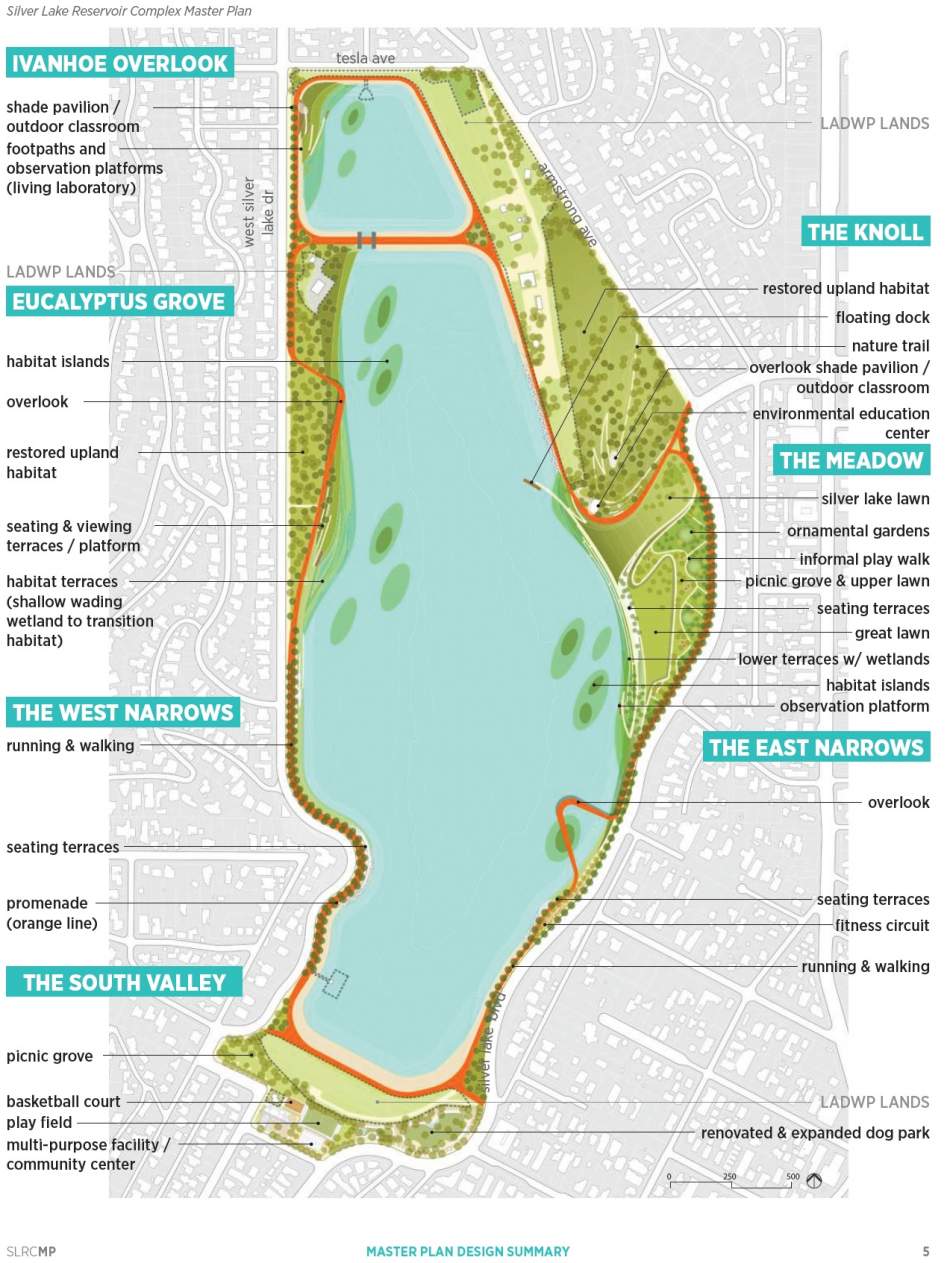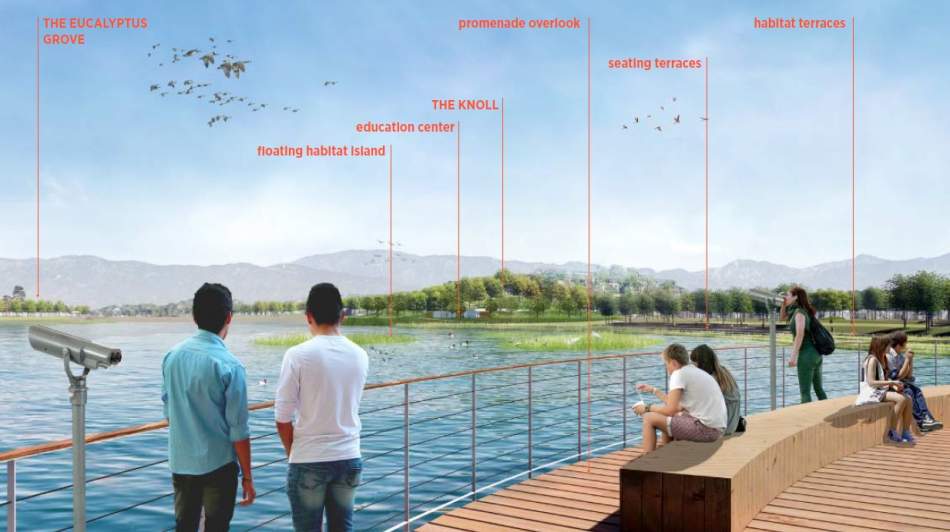In 2020, the City of Los Angeles rolled out a new master plan for transforming the Silver Lake Reservoir complex into an immense public park. Now comes the hard part - navigating the California Environmental Quality Act.
Yesterday, the City's Bureau of Engineering kicked off the environmental review period for the master plan improvements, which calls for redesigning 116 acres of the 127-acre complex with community green space, knitted together by a 2.5-mile perimeter path. The proposed park would be divided into seven sections, including:
- The South Valley, located at the southern edge of the park, would include a relocated picnic area, an expanded recreation center, a multipurpose facility, and outdoor plaza with seating, a basketball court, a soccer field, and an expanded dog park.
- The East and West Narrows, which hug the perimeter of the lake along Silver Lake Drive and Silver Lake Boulevard, would features a new promenade as well as landscaped embankments, terrace seating, fitness equipment, and an overlook jutting out above the water.
- The Meadow, located on the east side of the lake, the existing green space would be retained and augmented with new walking paths, gardens, play areas, and space for a kayak launch.
- Habitat Islands, which would be planted at various locations throughout the lake, creating space for wildlife and introducing fish into the water.
- The Knoll, featuring landscaping, gardens, and walking paths at the lake's northeast corner.
- Eucalyptus Grove, which would include seating terraces, walking paths, and restored habitat.
- Ivanhoe Overlook, which would add a classroom, landscaping, and other amenities at the far north end of the complex.
The project's environmental review is expected to continue over the coming year, with City Council approval currently expected in Spring 2023.
While no funding has been allocated to construct the range of improvements imagined in the master plan, completion of an environmental impact report is a key step, and opens the door to funding sources.
Built in the early 20th century ago by William Mulholland, the reservoir once provided drinking water for much of Central Los Angeles, but were phased out of use as a result of changing Federal policy in 2006. The approved master plan was initiated in 2018, following a community-driven proposal which envisioned a similar range of improvements.
- Silver Lake Reservoir (Urbanize LA)








